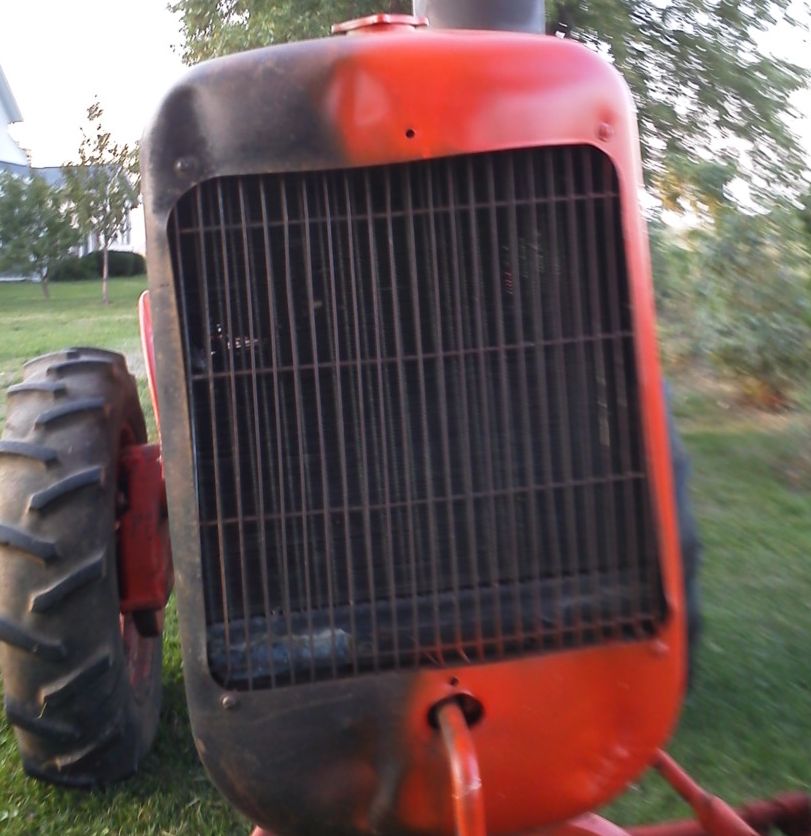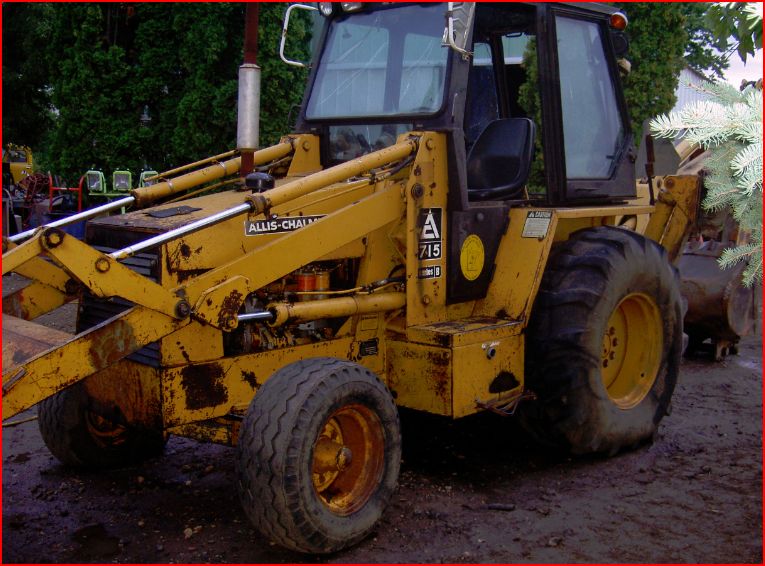| Author |
 Topic Search Topic Search  Topic Options Topic Options
|
mikeinkansas 
Bronze Level


Joined: 28 Sep 2009
Location: Ottawa, KS
Points: 45
|
 Post Options Post Options
 Thanks(0) Thanks(0)
 Quote Quote  Reply Reply
 Topic: Hidden Voltage Regulator Topic: Hidden Voltage Regulator
Posted: 21 Sep 2012 at 10:00pm |
Been working on the charging system for my WD and saw a couple of the posts here tonight. For keeping the orginal look has anybody every tried to make an electronic regulator that goes in switchbox where the original setup used the resistor on the light switch to control voltage? This would only work on generators or alternators without an internal regulator. The stock wiring harness would be all setup for it with the wire for the field going to up to the box. Also could control to the actual battery voltage by sensing from the battery side of the ammeter, not up at the generator. The design could have a dip switch to change from 6 to 12v systems and might be polarity indifferent. Background on my stuff, I used a 12V generator and have not been really happy with the new mechanical voltage regulator I bought. My tractor is not a show tractor so did not want to try too hard but the so-so performance from the regulator has me wondering. Also have a B with a 12V generator and similar performance from the regulator. Maybe somebody already tried this, or Steve already has something. If not wondering if there is interest in this.
|
 |
|
Sponsored Links
|
|
 |
Gerald J. 
Orange Level

Joined: 12 Sep 2009
Location: Hamilton Co, IA
Points: 5636
|
 Post Options Post Options
 Thanks(0) Thanks(0)
 Quote Quote  Reply Reply
 Posted: 21 Sep 2012 at 11:48pm Posted: 21 Sep 2012 at 11:48pm |
|
In the past 43 years I've built 4 solid state regulators, and one of them was on AC but still had to run DC to the field. The 4th one I built twice because AC or reversed polarity (its on a Chinese steam locomotive at the Boone and Scenic Valley RR) burned up the parts. It wasn't so compact that it would hide inside a switch box. And I've designed and built an AC current regulator using a DC IC inside a bridge rectifier. Making the design for AC adds considerable complexity in needing a bridge rectifier for the sensing and power supply, and then for the field control element with significant need for isolation between the sensing and the control segments of the circuit. Then there is the added complication of two ways to wire a generator or alternator field, though nearly all alternator fields are grounded at one end and fed power while generators are split between being grounded and being connected to the armature terminal which reverses the current in the control element. One way the control element (transistor probably) has to supply power, the other way the control element has to supply a variable resistance ground.
Its conceivable that a circuit could be built that could tolerate reversed polarity (but would not work with reversed polarity) by adding some series diodes and that could be wired with jumpers for either polarity. Handling both field connections essentially means a duplication of the control transistor because driving that transistor without a higher voltage than the generator output voltage means a different polarity transistor for high side than for low side control. The added series protective diodes will add power dissipation and temperature sensitivity to the voltage sensing circuit and may limit the maximum output or the lowest speed for charging of the generator/alternator. Simply because the voltage drop in the diode is temperature sensitive and reduces the voltage the control element can apply to the field coil. Then there's the complication of getting the inductive kick suppression diode correct for either generator field connection and polarity. And having the circuit survive the flashing necessary to get the generator to build with the same polarity as the battery.
A formidable design task. Not easily accomplished for free.
Gerald J.
|
 |
DaveKamp 
Orange Level Access


Joined: 12 Apr 2010
Location: LeClaire, Ia
Points: 5977
|
 Post Options Post Options
 Thanks(0) Thanks(0)
 Quote Quote  Reply Reply
 Posted: 22 Sep 2012 at 8:35am Posted: 22 Sep 2012 at 8:35am |
|
Gerald put it about right... it's a formidable task, considering the multitude of goals.
The mechanical generation and regulation system resides in a realm of technology and philosophy essentially separate from that which a modern alternation and regulation scheme exist. The durability it exhibits, is largely due to the fact that it has no sensitive elements (all based on simple electromagnetics), and polarity, for the most part, is irrelevant, once it has been properly established. The output of generator-regulator systems is substantially lower than what we expect from a modern system... seeing 5-10A of charging current while holding the ignition and headlamps was considered excellent performance THEN. Nowdays, we're used to having 50-100A on tap... because there's sound systems, computer engine management, heated seats, and air-conditioning.
I think that if there IS a GOOD way to cram everything in that space, it would probably end up being a thyristor chopper setup, rather than a linear regulator system... because a linear reg in that space would get really hot. It's a LOT of work for such a small power generating device.
I think a more sensible path (albeit somewhat torturous) would be to cleverly redesign the generator to be a low-power alternator with internal regulator.
If someone is that bent on having it look original, the best answer, is to just make it all original, and love it for what it is.
|
|
Ten Amendments, Ten Commandments, and one Golden Rule solve most every problem. Citrus hand-cleaner with Pumice does the rest.
|
 |
mikeinkansas 
Bronze Level


Joined: 28 Sep 2009
Location: Ottawa, KS
Points: 45
|
 Post Options Post Options
 Thanks(0) Thanks(0)
 Quote Quote  Reply Reply
 Posted: 22 Sep 2012 at 8:51am Posted: 22 Sep 2012 at 8:51am |
Thanks for the input, was over simplifying this. I had not done any research yet but after messing with my voltage regulator thougt there would be a better way with electronics. The over simplify is that am only looking at the field circuit and forgot about building the initial field. Was thinking if there was something like a packaged voltage controller from an OEM, an LM317 type of device from National Semiconductor, it would be slick. The main thing would be the size of a nickel. Would need to cruise through the National Semiconductor books and see if there is an easy button type of device for this like the LM317. Also if there is a way to isolate the electronics to look at the system like an ungrounded DC system would help with the polarity issue. If nothing pre-packaged then it gets difficult but would be a neat design project. But either way would take more free time than I have. Noticed this morning Dish has the Big10 network back so there goes my extra free time again. Thanks again - Mike
|
 |
Coke-in-MN 
Orange Level Access


Joined: 12 Sep 2009
Location: Afton MN
Points: 41892
|
 Post Options Post Options
 Thanks(0) Thanks(0)
 Quote Quote  Reply Reply
 Posted: 22 Sep 2012 at 10:07am Posted: 22 Sep 2012 at 10:07am |
There are some voltage regulators out there made for motorcycles to replace the old point type with solid state. some are made to bring the 6 volt gen to the 12 volt for use. Might check on some of these as they are small units to fit inside the old regulator cases .
|
|
Faith isn't a jump in the dark. It is a walk in the light. Faith is not guessing; it is knowing something.
"Challenges are what make life interesting; overcoming them is what makes life meaningful."
|
 |
Gerald J. 
Orange Level

Joined: 12 Sep 2009
Location: Hamilton Co, IA
Points: 5636
|
 Post Options Post Options
 Thanks(0) Thanks(0)
 Quote Quote  Reply Reply
 Posted: 22 Sep 2012 at 10:52am Posted: 22 Sep 2012 at 10:52am |
|
The LM317 and LM340 family have the ruggedness required for the inductive kicks of the field coils and the voltage kicks associated with alternators. Unfortunately they aren't arranged in a way that works for regulation the field. They take an unregulated voltage and pass it through with a constant output voltage, so long as the input is more than a couple volts over the output voltage and under about 35 volts and they don't get too hot. They are nice for that application with current limiting and thermal limiting. I'm sure everything solid state item I have uses several.
I've not looked for a solid state alternator regulator, though there should be some because I've bought solid state modern regulators in metal packages to emulate the magnetic vibrating regulators. Early solid state factory regulators used a zener diode for reference and two or three bipolar transistors.
Yes a chopping regulator in solid state would be nice for regulator power dissipation, probably nastier on radio reception in the car or truck but thyristors are unsuitable for DC because they aren't easy to turn off. GTO devices or power MOSFETS are nicer. I like power MOSFETs. I used a power MOSFET in my steam locomotive regulator with a TL31C set up to shunt the gate drive to regulate. I use the TL431C open loop with a feedback capacitor to slow it down to the speed of the MOSFET. There is a TL431C in virtually every desktop computer supply these days. So the part is not hard to buy. Select a pair of resistors and it makes a controller for any voltage from 2.5 to 35 volts, though I know of circuits regulation 350 volts for radio transmitters based on that little chip. When they burned up my first steam locomotive regulator from AC or reversed polarity, the TL431C survived.
Getting the generator to build when started is a concern. In mine I used a fixed power resistor across the control transistor to set a minimum field current. Then with any voltage rise, I turned on the power MOSFET and turned it off with the TL431C. That power resistor in the RR regulator (32 volts) takes up more volume than the rest of the regulator.
I've considered, but not designed yet, that many a PIC chip has an analog input or as many as there are I/O pins and has the capabililty of a pulse width modulated output. That would probably be the device to make a pulse switching generator voltage regulator. It needs 3 to 5 volts supply, and will idle on a few microamps, so a 2032 lithium cell will run it for years. Some cost as little as 79 cent each, it would take a bit of software to be embedded to look at the voltage samples and to change the pulse width drive to the external power device (probably a MOSFET) to control the detected voltage. It would need a reset on engine start which might be detected from ignition switch power. I think there are some fancy switching supplies already doing that. It would only rest on the lithium cell, not run on it. Many can supply their own processor clock. And there are competing devices from many other makers. Its a major task to learn each maker's programming schemes and I like PIC chips so much I've bought a chunk of stock in the company. So I'm biased. There are hundreds of PIC chips to choose from.
Now is there enough market to cover weeks of engineering and testing?
Gerald J.
|
 |
ALinIL 
Orange Level


Joined: 20 Sep 2009
Location: Frankfort, IL
Points: 316
|
 Post Options Post Options
 Thanks(0) Thanks(0)
 Quote Quote  Reply Reply
 Posted: 22 Sep 2012 at 5:43pm Posted: 22 Sep 2012 at 5:43pm |
|
How about trying a Accel #201104 Voltage Reg. These were used on H-D cycles in the 70's. They are not any smaller than the mech units but can be hidden up in-front of the gas tank under the hood. That where I mounted my mech reg about 10 years ago.
|
 |
jaybmiller 
Orange Level Access

Joined: 12 Sep 2009
Location: Greensville,Ont
Points: 24405
|
 Post Options Post Options
 Thanks(0) Thanks(0)
 Quote Quote  Reply Reply
 Posted: 23 Sep 2012 at 6:37am Posted: 23 Sep 2012 at 6:37am |
Another source of small regulators are the ones for B&S engines,most are good for 15 amps,based on thyristors( I've 'depotted' them).Only good for negative ground systems though as the case must be ground.
I seriously doubt the profitability of a universal regulator.yes it can be done( winter project #23....) but a very limited market.How many could be sold for say $75 ??
The problem with PICs(any micro based system) is 'noise'.again all it takes is R&D money..and I've designed/used PICs for 20+ years.sigh..now I really feel old....
hth
jay
|
|
3 D-14s,A-C forklift, B-112
Kubota BX23S lil' TOOT( The Other Orange Tractor)
Never burn your bridges, unless you can walk on water
|
 |
Gerald J. 
Orange Level

Joined: 12 Sep 2009
Location: Hamilton Co, IA
Points: 5636
|
 Post Options Post Options
 Thanks(0) Thanks(0)
 Quote Quote  Reply Reply
 Posted: 23 Sep 2012 at 11:03am Posted: 23 Sep 2012 at 11:03am |
|
On DC, a thyristor won't turn off. Its place is as a controlled rectifier for AC which is what its doing on the B&S unit. It won't control a DC generator.
Gerald J.
|
 |
Coke-in-MN 
Orange Level Access


Joined: 12 Sep 2009
Location: Afton MN
Points: 41892
|
 Post Options Post Options
 Thanks(0) Thanks(0)
 Quote Quote  Reply Reply
 Posted: 23 Sep 2012 at 11:10am Posted: 23 Sep 2012 at 11:10am |
Here is a site for the Podtronics regulator used for the Lucas generator on cycles , it is set for the ground you wish to use . It can be placed inside the case of a present regulator to hide the New unit for those who want original look
Edited by Coke-in-MN - 23 Sep 2012 at 11:13am
|
|
Faith isn't a jump in the dark. It is a walk in the light. Faith is not guessing; it is knowing something.
"Challenges are what make life interesting; overcoming them is what makes life meaningful."
|
 |
BrettPhillips 
Orange Level


Joined: 11 Sep 2009
Location: Strasburg, VA
Points: 808
|
 Post Options Post Options
 Thanks(0) Thanks(0)
 Quote Quote  Reply Reply
 Posted: 23 Sep 2012 at 7:42pm Posted: 23 Sep 2012 at 7:42pm |
I keep saying I'm going to send a D14 regulator to this guy for a heart transplant: http://www.wiltonae.com/home/index.aspx Not Cheap, but I'll bet it's worth every penny in peace of mind and battery life. New electromagnetic/mechanical regulators are not cheap either, and as others have pointed out, they are junk in comparison with the original equipment.
|
 |
CTuckerNWIL 
Orange Level


Joined: 11 Sep 2009
Location: NW Illinois
Points: 22822
|
 Post Options Post Options
 Thanks(0) Thanks(0)
 Quote Quote  Reply Reply
 Posted: 23 Sep 2012 at 8:19pm Posted: 23 Sep 2012 at 8:19pm |
Brett, It would be nice if they could cram that all in a cutout relay box, but there aren't enough lugs sticking out  It would be lot easier than trying to figure out what your battery needs while you are playing in the dirt 
|
|
|
 |
Steve in NJ 
Orange Level Access


Joined: 12 Sep 2009
Location: Andover, NJ
Points: 11926
|
 Post Options Post Options
 Thanks(0) Thanks(0)
 Quote Quote  Reply Reply
 Posted: 24 Sep 2012 at 9:16am Posted: 24 Sep 2012 at 9:16am |
|
The biggest mistake in purchasing external voltage regulators is not mating the regulator with the Generator. That's why I always ask for the Generator being used part number off the tag (if its available) to mate the correct VR to the Gennie. We're not lifting the space shuttle here...
Steve@B&B
|
 |









 Topic Options
Topic Options

 Post Options
Post Options Thanks(0)
Thanks(0)







 It would be lot easier than trying to figure out what your battery needs while you are playing in the dirt
It would be lot easier than trying to figure out what your battery needs while you are playing in the dirt

